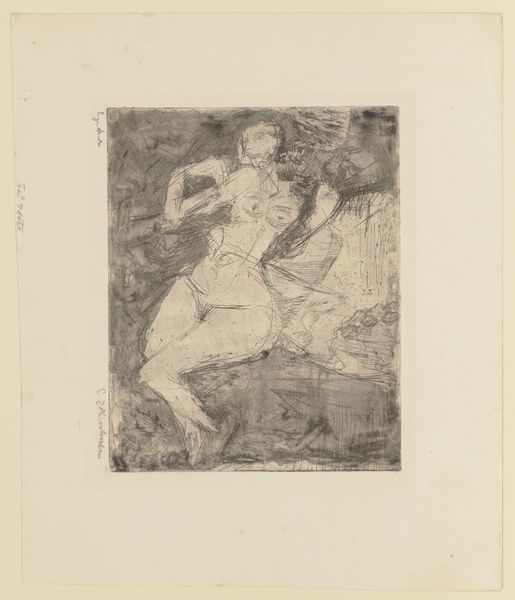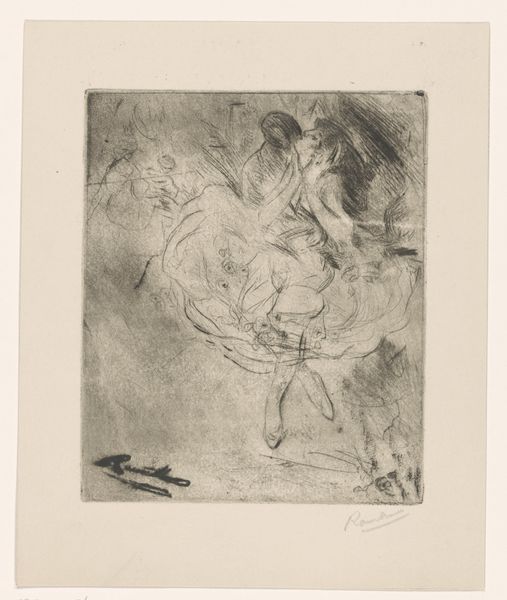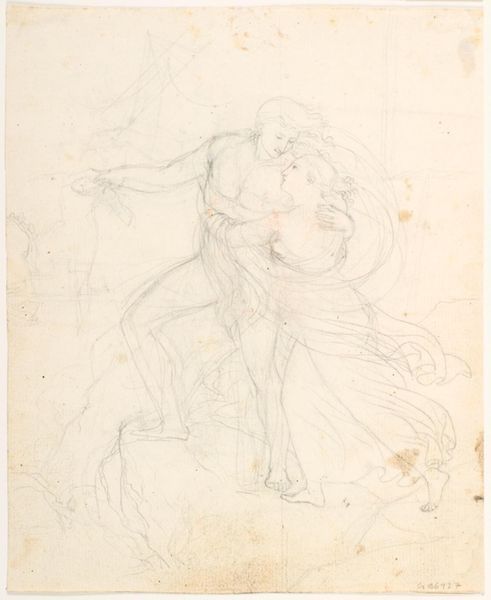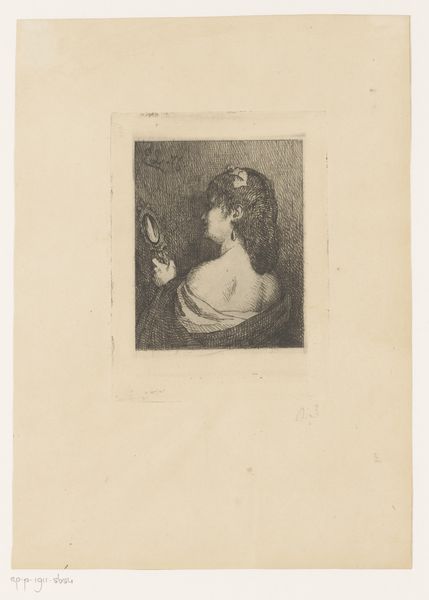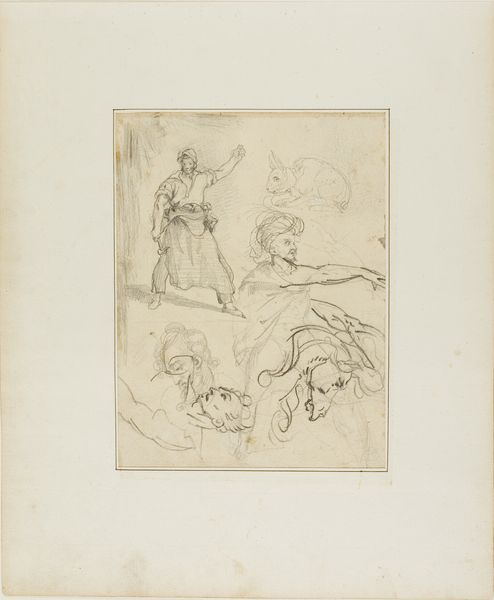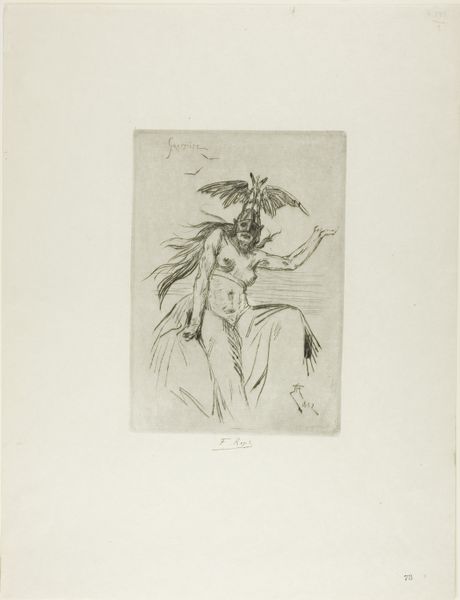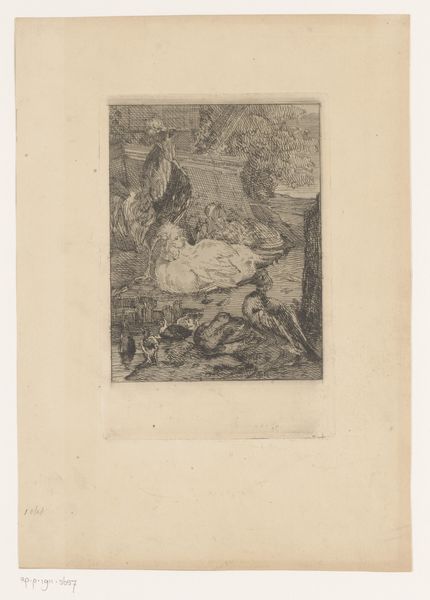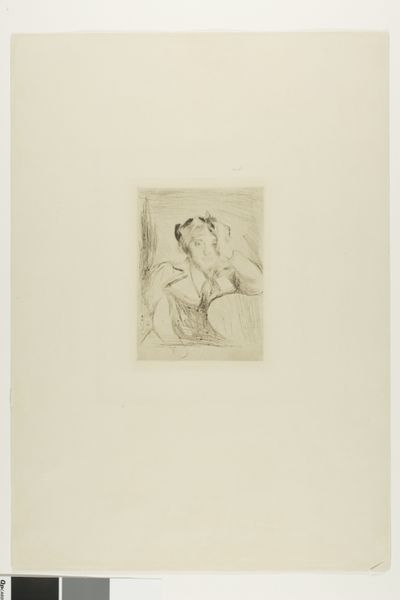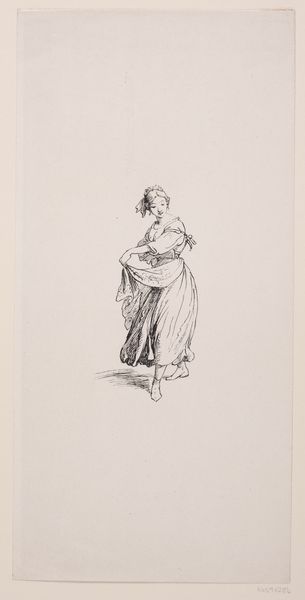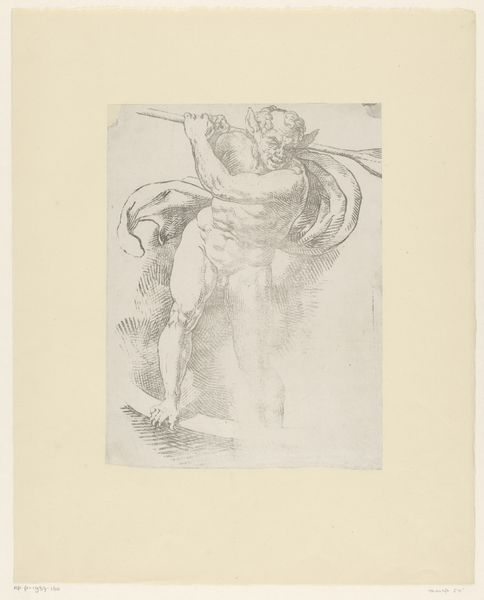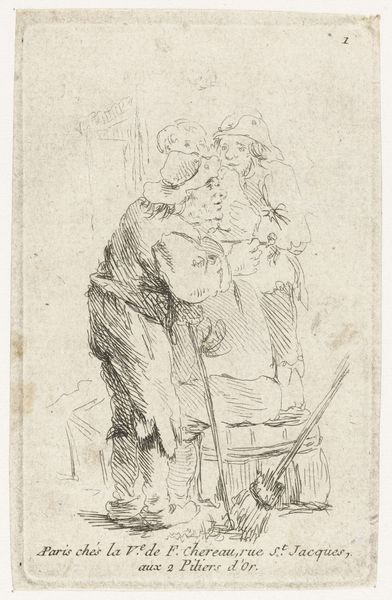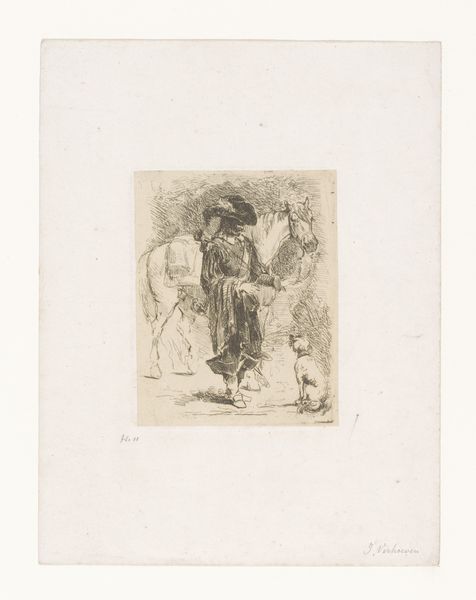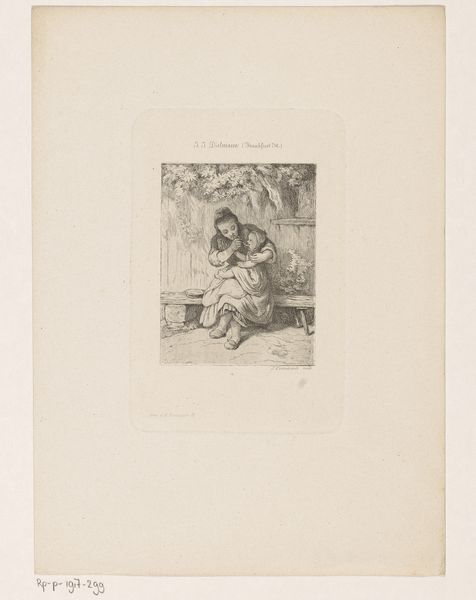
Dimensions: 219 × 141 mm (image); 219 × 141 mm (plate); 361 × 276 mm (sheet)
Copyright: Public Domain
Editor: We’re looking at Renoir's "Dance in the Country," an etching from around 1890. It's quite small, capturing a couple dancing, but it feels very intimate. What’s your interpretation of this work? Curator: This piece, like much of Renoir’s work, invites us to consider the representation of women and the construction of bourgeois leisure in late 19th-century France. Think about who had access to dance halls and the kind of interactions they facilitated. Does this image reinforce or challenge the dominant gender dynamics of the time? Editor: That’s interesting. I was focused on the tenderness, the way they’re holding each other. Are you saying that reading is too simple? Curator: Not necessarily. But it’s important to ask: what kind of tenderness is being depicted, and for whose consumption? Consider the male gaze inherent in much of Impressionist painting. How does Renoir negotiate this gaze? Is the woman an active participant or a passive object of beauty? Editor: So, you're suggesting that beneath the surface, there could be questions about power and societal roles at play here? Curator: Exactly. This is where art history connects to contemporary theory. How can feminist theory or critical race theory inform our understanding of even the most seemingly innocent image? It encourages us to consider how notions of identity and representation are embedded within artistic traditions. Editor: I see what you mean. It definitely gives me a lot more to think about than just the pretty picture. Curator: Indeed. Art acts as a historical and cultural record. Examining those underlying dynamics enables us to challenge those ingrained notions, promoting more inclusive interpretations of art history. Editor: That's really opened my eyes! I'll definitely look at art differently from now on. Curator: Fantastic. Remember, engaging with art involves ongoing conversations. Asking critical questions enhances the work itself.
Comments
No comments
Be the first to comment and join the conversation on the ultimate creative platform.
